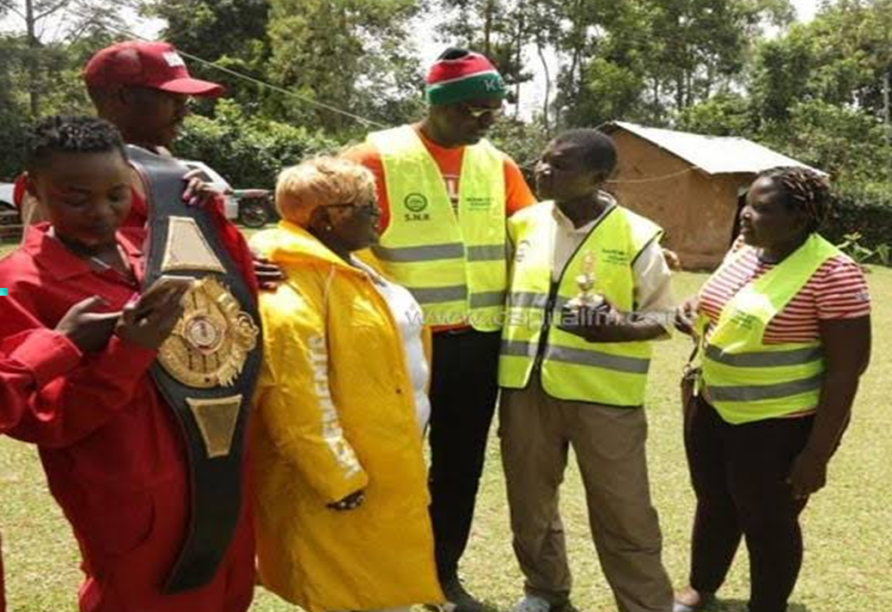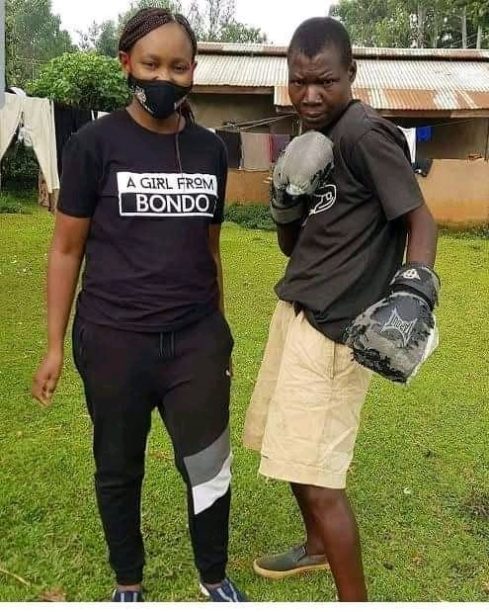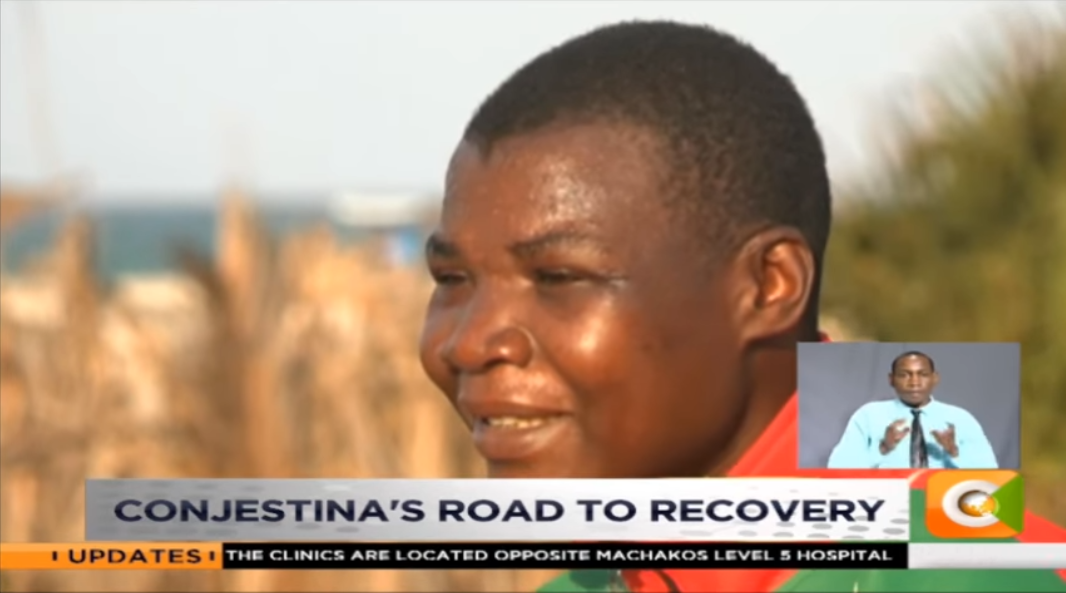“Conjestina Achieng ashindwa” (Conjestina Achieng is beaten), read the NTV Swahili news headline at 7 p.m. on that 1st of April 2006, only a few days before the end of first term at my high school. The news left me dejected. I’d been eagerly anticipating the fight in hopes of seeing Conjestina beat her American opponent, Yvonne Reis. She was our star and we took pride in her victories. We believed in her; we were always almost certain that she would emerge victorious in every fight. Such was our trust.
Just before this fight, Conjestina had beaten her two previous opponents from Argentina and Zambia, and I’d been hoping for nothing less than a win. Because I believed Conjestina had the ability and stamina to do it.
But this fight made our heads bow in defeat.
Conjestina alone created a niche for the sport of boxing in my heart, and in the hearts of many other Kenyans. Conje’s heroic performances in the ring piqued the interest and emotions of a whole nation. Nicknamed ‘hands of stone’ after becoming the first African to win a title as the middleweight champion in the Women’s International Boxing Federation (WIBF) in 2004, Conjestina became one of the most sought-after and admired athletes in Kenya—second only, perhaps, to footballer Dennis ‘the Menace’ Oliech.
From the start of her career, Conjestina showed a special eagerness to humble and even annihilate her opponents in the ring with her agility and quick calculations. Her success created a media fanfare. For many, she was the star who would not dim, even in the midst of publicized difficulties she endured, such as inadequate pay for such a popular athlete, and the lack of a proper medical team to monitor her. Her passion and determination carried her through these obstacles, and she survived on the little she earned from fights, living in straitened circumstances. In Kenya, it must be said, fair pay for athletes is a far-fetched dream.
Despite these challenges, Conjestina won 17 of her 27 fights, losing six and drawing four. A remarkable performance, considering her low-grade training facilities and supervision.
But disaster struck in early 2011, when the boxing star was diagnosed with schizoaffective disorder/paranoid schizophrenia. She was admitted at Mathari Hospital, and released in 2014, but has never completely recovered from her illness. Before her hospitalization, she was reported to have set her house on fire, and removed her son from school for no apparent reason. If she’d had the appropriate medical attention, perhaps the problem could have been detected before 2011, when she started behaving weirdly.
After her initial release, Conjestina returned to her home town, Yala, in Siaya County, and she has been in and out of hospital ever since. Clips of a weak and ailing Conjestina surfaced on the internet in 2017, with appeals for help. In November 2018 the then-governor of Nairobi, Mike Sonko, airlifted the former boxer from her Nyanza rural home to Nairobi for treatment and rehabilitation. Sonko promised to support Conjestina and give her a job after her recovery—help that had never come from her native county, nor from the national government.
On social media, many wondered why the Siaya representative, a woman, had not taken charge. At 43, Conjestina is still young and she has the capability to turn her life around if she is given the necessary support.

Sadly, it is not clear if Sonko’s plan and promise bore any fruit. In June 2020, veteran sports journalist Carol Radull shared news of her visit to Conjestina’s home in Yala, and found her still struggling. Radull said the star has “lost a lot of weight, but [is] still strong physically” adding that Conje is angry at the system that abandoned her at her time of need. Some responded to Radull’s news with the observation that the government celebrates our neglected heroes and heroines—particularly those in the sporting world—only after they die.
In late August of this year, local media reported that Conjestina had again set fire to her own house, an allegation Radull refuted, reporting that the fire was an accident and had not been set deliberately. She also said the star is facing challenges after the Heroes Council failed to honour their promise of a job after her rehab last year. This allegation again prompted Sonko to airlift her to Nairobi for rehabilitation.

The Kenya Heroes Act of 2014 established a 13-member National Heroes Council, which is charged with formulating criteria for the identification, selection and honouring of national heroes. The council is also empowered to provide material assistance for those chosen as heroes in the categories of liberation, sports, philanthropy, human rights, peace-making, arts, scholarship, entrepreneurship and cohesion-building. But so far, a full seven years later, no funds have been distributed to the struggling sports personalities the Act was intended to help. The Act’s only achievement to date is recognition of heroes and heroines during National Mashujaa (Heroes) Day celebrations.
Many beloved sports icons should have benefited from this fund, but thanks to Kenya’s inept government, little or no assistance has been distributed. In 2017, when veteran footballer Joe Kadenge was in hospital, well-wishers raised Sh1million (about $10,000 USD) toward his medical bills. Those people who have raised the flag of this country high should be able to retire gracefully, rather than living in poor conditions or even dying in poverty and misery.
“Conjestina’s situation wouldn’t have been this bad if the Heroes Council Act had not been delayed in its set-up,” said one of my friends on that night in 2018, when Sonko first airlifted her to Nairobi. “There is a big problem in this country,”
My friend was right. Kenya incapable of providing adequate care and support to its citizens. It is not a country that is poor; it is a country that has sunk itself deeper and deeper into the abyss of poverty through poor choices of leadership. We help our country climb high on the corruption ladder, and later mock our own miserable situation on social media by creating funny memes. Kenya is a country that will apparently keep its head comfortably in the sand for all eternity.






